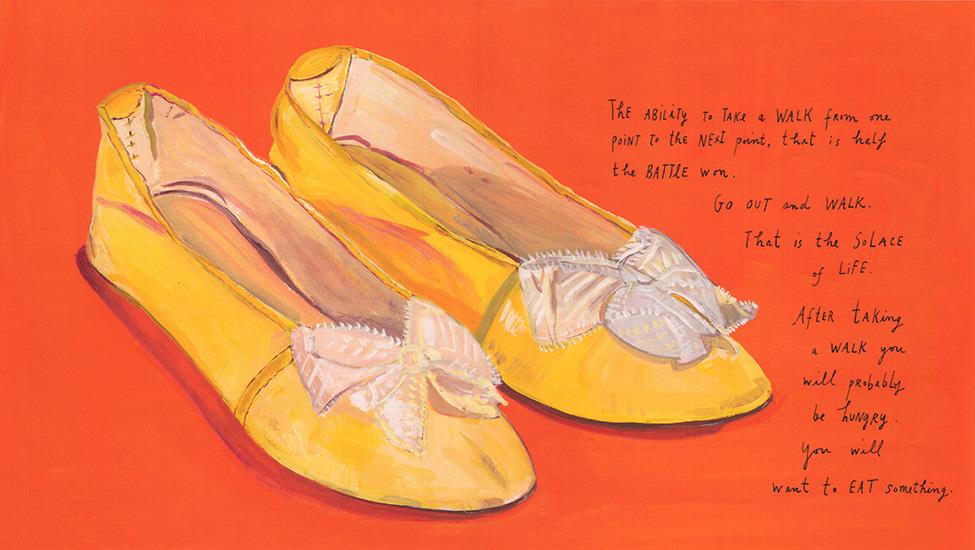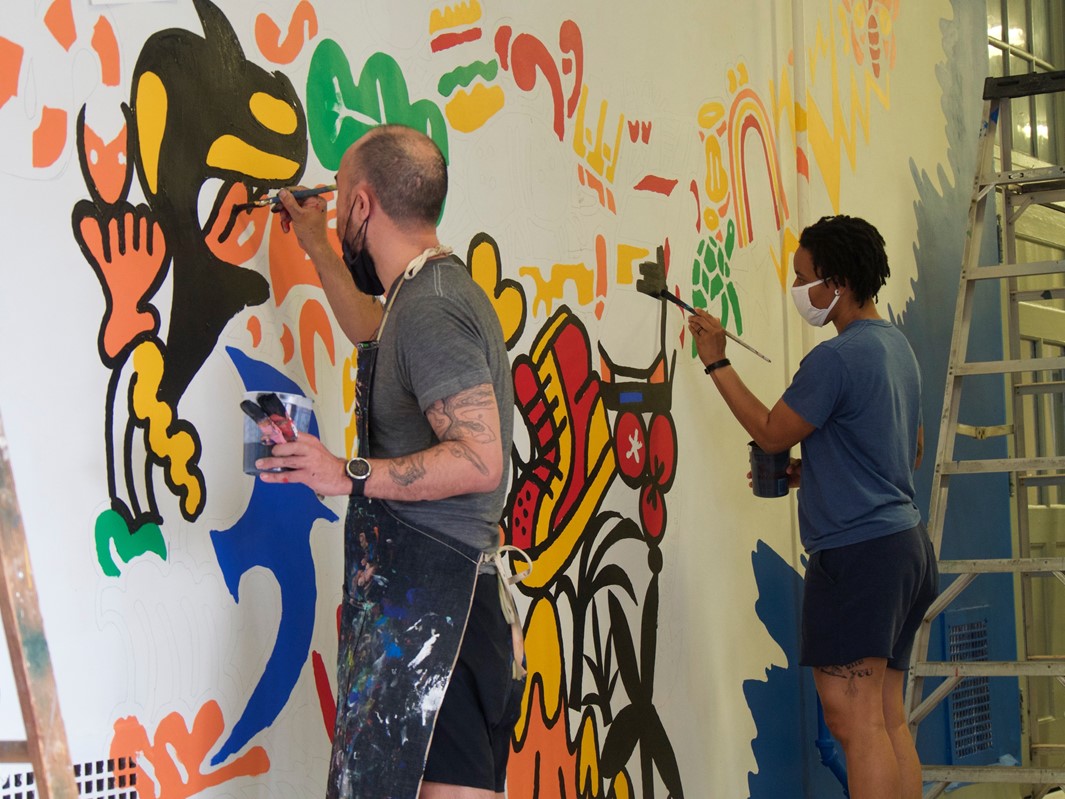Maira Kalman is an author and illustrator of numerous books for adults and children including What Pete Ate, Looking at Lincoln, The Principles of Uncertainty, and The Pursuit of Happiness. She has illustrated Strunk and White’s The Elements of Style and Michael Pollan’s Food Rules and is a frequent contributor to The New Yorker and The New York Times. She recently danced the role of the duck, in tutu and flippers, in Isaac Mizrahi’s production of Peter and the Wolf. She is represented by the Julie Saul Gallery, is the owner of Toscanini’s pants, and lives in New York City.
Kalman’s most recent book, My Favorite Things (Harper Design, September 2014 is an exploration—in words and illustrations—of the significance of objects in our lives, and weaves together Kalman’s musings on personal artifacts, family lore, and selections from the collection of the Cooper-Hewitt, National Design Museum. An accompanying children’s book, Ah-ha to Zig-Zag (Skira Rizzoli Publishing), was published in October.
My Favorite Things is a unique and wonderful meditation on memory, on love and family, and on the passing of time, inspired by the things large and small “taking up space and taking up time” in Kalman’s life—and in ours. Susan Karwoska interviewed Kalman by e-mail in mid-February to ask her about this most recent work, and about her creative process in general. Following the interview are links to a few lessons that encourage students to write about their own favorite things.
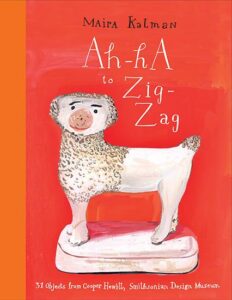
Susan Karwoska: I don’t think I’ve ever read something quite like My Favorite Things. What strikes me most about the book is the creative freedom you allow yourself in it, as in all your work. Can you describe the path you took to get to the place where you can do this kind of work?
Maira Kalman: The path my brain takes is always a digressive one. It has been that way forever. I was always a daydreamer and no one stopped me from being that way. There is an observational quality and a sense of the absurd that accompanies my way of being. I do like to communicate, but I also like to be entertained.
SK: Your book grew out of an invitation from the Cooper-Hewitt to curate an exhibit based on their collection, and you write that you spent a year there “like a shopper in some great, mad department store that housed many centuries’ worth of objects.” What was it like browsing among these objects, day after day?
MK: I was able to look at the objects with no preconceived idea of what I wanted. The only criterion, as I wrote, was a gasp of delight. If I fell in love with the object for whatever reason, then it was on the list.
The path my brain takes is always a digressive one. It has been that way forever. I was always a daydreamer and no one stopped me from being that way.
SK: Most Americans have so much stuff, by any measure, and a fraught relationship with it as well. There is a whole industry that has developed to help us manage it. You give us a much different take on the things with which we surround ourselves, showing how they delight and connect us, map our passing and give shape to our memories. In your view, when do the things we possess shift from pleasure to burden?
MK: Certainly as we get older, we have accumulated a tremendous amount of stuff. The turning point comes when you look at what you have and wonder why it is there. I am now in the process (a slow and fraught one) of divesting and trying to minimize my possessions. But how can I give away the ladder in the middle of my living room or Toscanini’s pants? Ah, the problems one encounters.
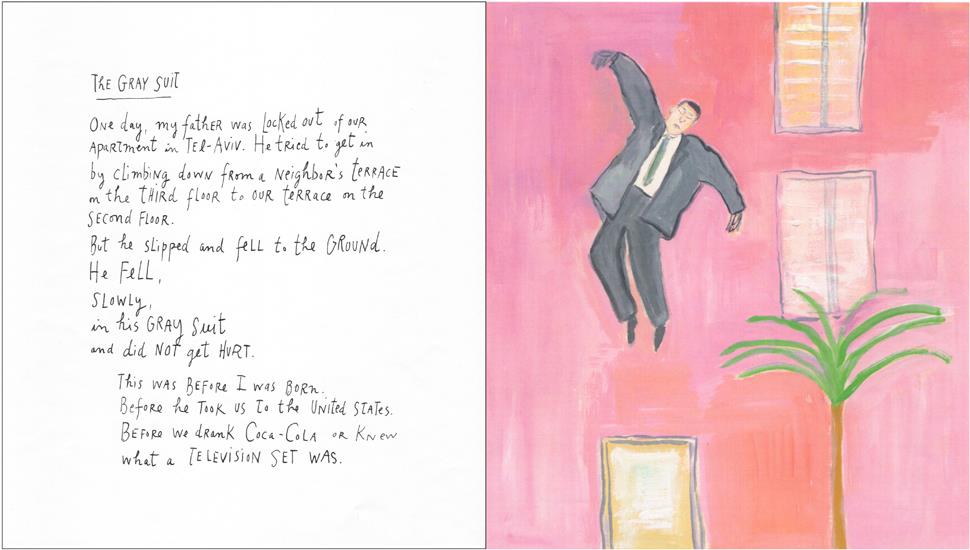
SK: In My Favorite Things, you not only write about the objects you chose for the installation, but also offer your own list of the things you love. What are the particular qualities you find yourself drawn to in objects, and why do these qualities speak so strongly to you?
MK: The things I love are random and varied. From a Comme des Garçons shoe to a Queen Elizabeth coffee cup to a hat made in the thirties to a set of spoons with the name Laura on them. Maybe the one common factor is that they were made by someone who cared deeply about the piece. You can see the love and attention. Maybe that is what speaks to me.
SK: In a recent TED talk, you said, “How do we know when we’re ourselves? How do we actually know when these sentences coming out of our mouths are real stories or just the fake stories we think we should be saying?” Do you think anchoring our stories to the objects in our lives is a way to get closer to our own voice, our own stories?
MK: I used to think so, but I am not sure. Maybe the anchors are an illusion. Maybe no anchor is the strongest place to be.
The things I love are random and varied. From a Comme des Garçons shoe to a Queen Elizabeth coffee cup to a hat made in the thirties to a set of spoons with the name Laura on them. Maybe the one common factor is that they were made by someone who cared deeply about the piece. You can see the love and attention.
SK: There is a long literary tradition of writers making lists of things they like: from Sei Shōnagon in The Pillow Book, to Roland Barthes, Susan Sontag, and Vladimir Nabokov, among others, and including, of course, songwriters Oscar Hammerstein and Richard Rodgers, who wrote the song “My Favorite Things.” Why do you think writers—and their readers—find these lists so compelling?
MK: I make lists all the time. They are a bit of poetry. A bit of making sense of the world. A bit of calming. A bit of optimism. I have done this. I will do that. I will buy that. I will call that person. I will visit that place. I will clean that room.
SK: How do you see your words and your pictures interacting on the page? Can you describe your creative process?
MK: The process is a fluid one. Words and pictures float through my day. I make notes of what is important or seems important. Then I can go back, looking at the journals that I am keeping and see what I like. Then I write a manuscript, then revise, then revise again. Editing down to what is essential. To say as much as possible in the fewest words. The drawings are moving along at the same time.
SK: As well as being an artist and a writer, you have also collaborated with Nico Muhly on an opera based on The Elements of Style, with the Mark Morris Dance Group, and with the designer Isaac Mizrahi, among others. With these collaborations, as with all of your work, there’s a sense of complete openness to possibility, of pushing boundaries. How essential is this risk-taking to your artistic process?
MK: I don’t think of it as risk-taking. Just a curiosity about what it would be like to try something new. Of course there is always a fear of doing something badly, but in a way, one needs to go through bad work to get to what you might consider good work. I work with people who I feel a kinship with. Of ideas and humor.
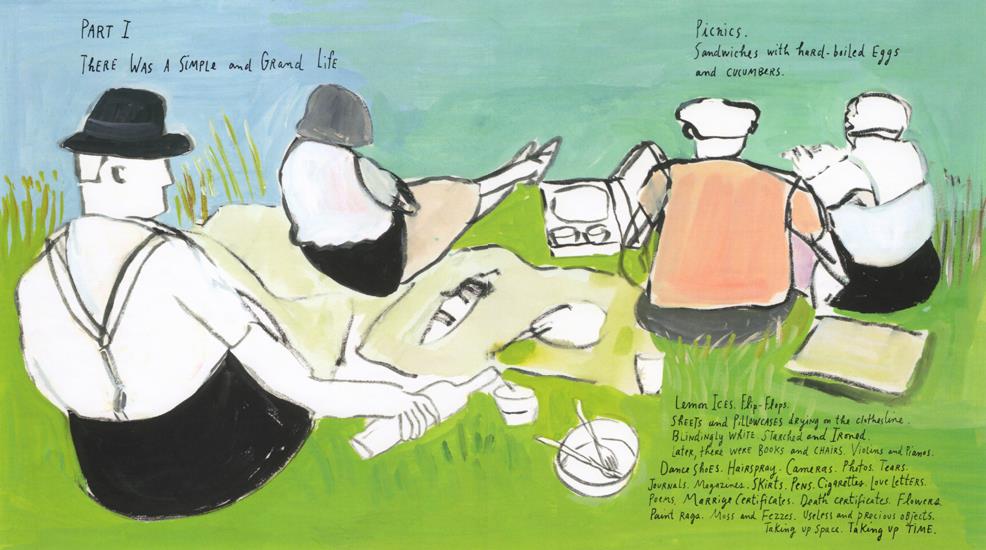
SK: I love how Ah-ha to Zig-Zag offers kids a way of looking at things, creating a sense of wonder about the great variety of things the world holds. What do you want kids to take away from the book?
MK: Maybe a feeling of curiosity and wonder, as you say. To value their encounters with the every day and the ordinary.
SK: Were your creative impulses nurtured as a child, at school or at home?
MK: My mother was my greatest champion. She had faith that what I was doing had merit. As I said, I was a daydreamer and she did not stop that trait. It has carried into my adult life in a most productive way. My seventh-grade teacher, Mrs. Walters, told me that I was a good writer. That gave me tremendous self-confidence.
SK: Did you start out as a writer or an artist?
MK: I wanted to be a writer from about the age of eight or so. The art came later, and then I understood that I could do both if I chose to.
SK: What is the most important thing you think teachers can do to support and encourage their students’ creative life?
MK: That is a difficult question, because you never know how that process is really working in an individual. But I would encourage making mistakes and just doing what comes naturally. To let a person know that what they are doing when they are themselves is of great value.
SK:If you could use My Favorite Things or Ah-ha to Zig-Zag as the basis for a classroom writing lesson, what would it look like? What would you like young writers to understand about looking and seeing, and what are your suggestions for how they might begin to write about their own “favorite things”?
MK: The only thing I would encourage them to do is write and draw. About any object they like. After that, it is up to them, letting them know that there is no wrong way.
Susan Karwoska is a writer, editor, and teacher. She is the recipient of a New York Foundation for the Arts (NYFA) Fellowship in Fiction; a Lower Manhattan Cultural Council Workspace residency for emerging artists; and residencies at the Ucross Foundation and at Cummington Community of the Arts. From 2005-2014 she was the editor of Teachers & Writers Magazine and currently serves on its editorial board. She is also on the board of the New York Writers Coalition, and has served on NYFA’s artist advisory board. She writes and edits for a variety of publications and organizations, works as a writer-in-the-schools, and lives in Brooklyn, New York, where she is at work on a novel.

